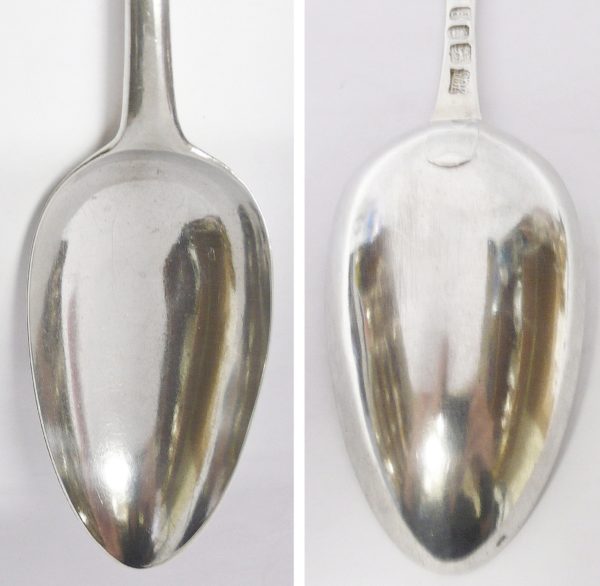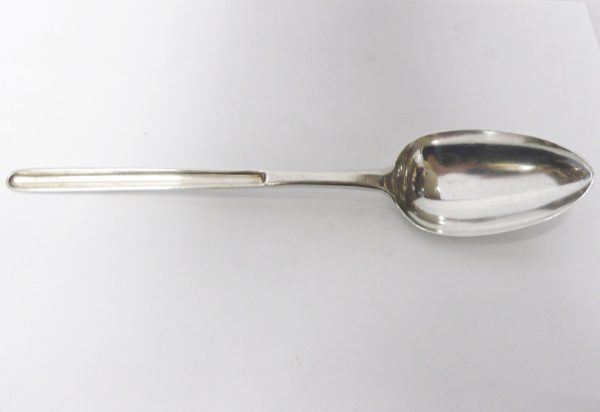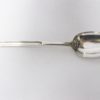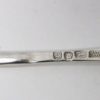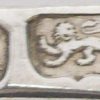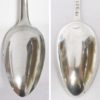Antique Georgian Silver Marrow Scoop Spoon. by Hester Bateman
SOLD
Stock: 8148
Date: 1782
Maker: Hester Bateman
Country: England
A rare and very collectible item by this sought after English lady silversmith. This George III sterling silver spoon is...
Description
Condition
This special spoon is in good condition with no damage or restoration. The bowl of the spoon is not worn and still retains its original shape. With a full and clear set of English silver hallmarks. There is a very minor dink inside the bowl. Please note that this item is not new and will show moderate signs of wear commensurate with age. Reflections in the photograph may detract from the true representation of this item.
Maker Information
Maker: Hester Bateman
Hester Bateman (1708–1794) is probably the most well known of all English lady silversmiths and her work is highly collectible. She married in 1732 the goldsmith John Bateman, and together they worked a small silversmith business. Following the death of her husband in 1760 she successfully ran her family business for thirty years and was succeeded in turn by her sons, grandson and great-grandson and the Bateman family silversmithing company lasted until the middle of the nineteenth century. Hester had at least five children - Jonathan, Peter, probably John (who may have been connected with the business, although he is only recorded as a watch and clock-maker), Letitia (who married Richard Clarke), and Ann. Only Peter, Letitia, and Ann were still living at the time of Hester's death. Hester registered her mark at Goldsmith's Hall ‘April 16, 1761, as Hester Bateman in Bunnhill Row and this mark was used until 1790. Hester died in 1794. 1790 registered mark of her sons PETER BATEMAN and JOHN BATEMAN. This partnership was of short duration as Jonathan, who married Ann Downlinff, died in 1791. 1791 registered mark PETER and ANN BATEMAN, Jonathan's widow. 1800 registered mark PETER BATEMAN, ANN BATEMAN and WILLIAM (I) BATEMAN. William Bateman was the son of Jonathan and Ann Bateman who in 1800 entered in partnership with his uncle Peter and his mother Ann. 1805, after the retirement of Ann, registered mark PETER BATEMAN and WILLIAM (I) BATEMAN. From 1815 to 1840 WILLIAM (I) BATEMAN was registered alone. From 1839 to 1843 WILLIAM (II) BATEMAN (son of William I) & DANIELL BALL.
Our Guarantee
Customer satisfaction is our primary concern
All silverware on our website is checked thoroughly prior to offering it for sale and every product listing contains a condition report and details of the silver hallmarks.
All items offered on our website include:
- Free Shipping Worldwide
- Tracked and Insured
- 14 day no quibble money back guarantee
- We are accredited members of LAPADA and conform to their strict professional standards
- We dispatch 1-3 days after receiving cleared payments
More detailed information about deliveries, returns and how to pay is available in the Help section at the bottom of this page.
